
How to Use 1 Channel Relay 5V: Examples, Pinouts, and Specs
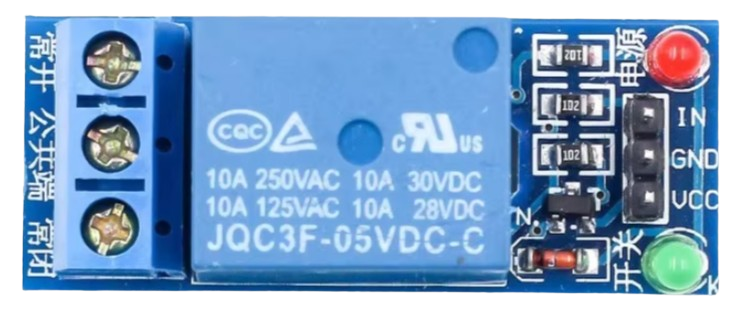
 Design with 1 Channel Relay 5V in Cirkit Designer
Design with 1 Channel Relay 5V in Cirkit DesignerIntroduction
The 1 Channel Relay 5V is an electromechanical switch module that allows a low voltage control signal (e.g., from a microcontroller) to control a higher voltage circuit. This module is widely used in automation, home appliances, and industrial control systems to safely isolate and switch high-power devices such as lights, motors, and heaters.
Explore Projects Built with 1 Channel Relay 5V
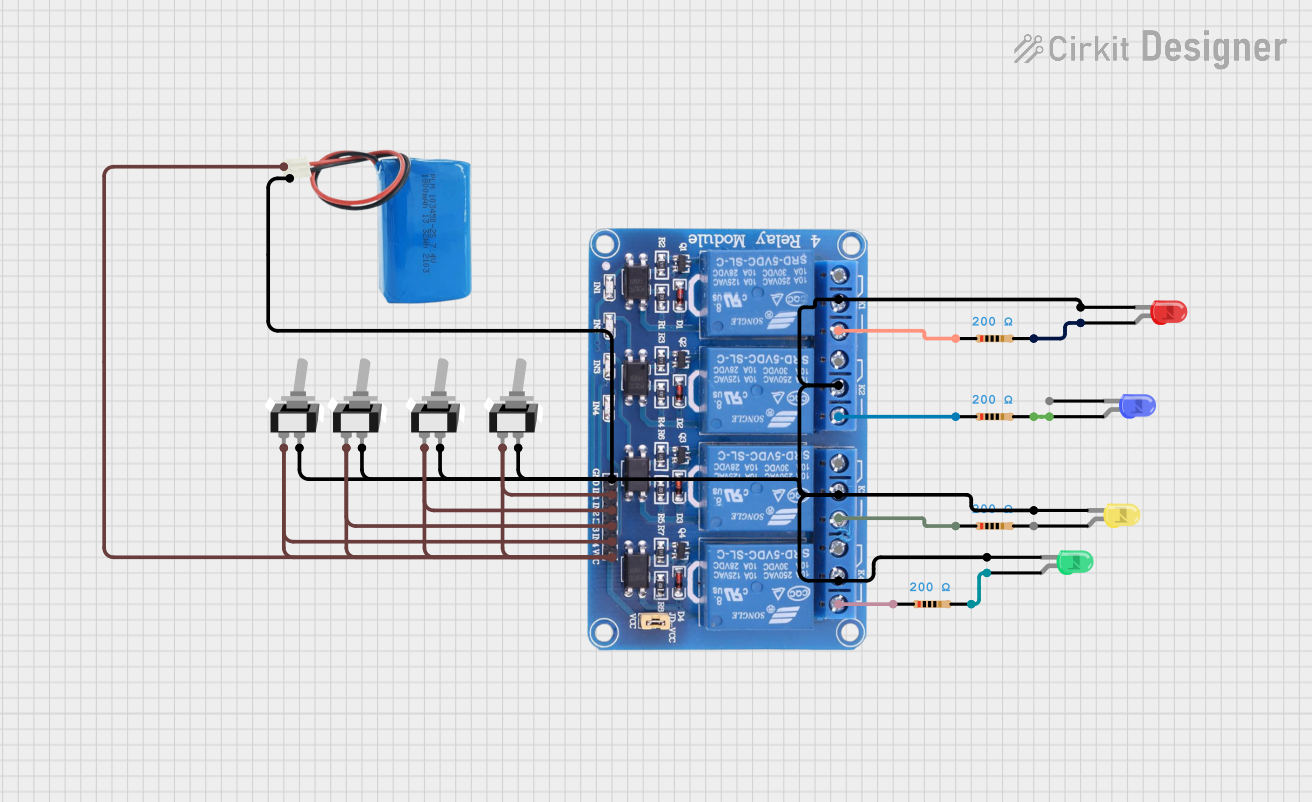
 Open Project in Cirkit Designer
Open Project in Cirkit Designer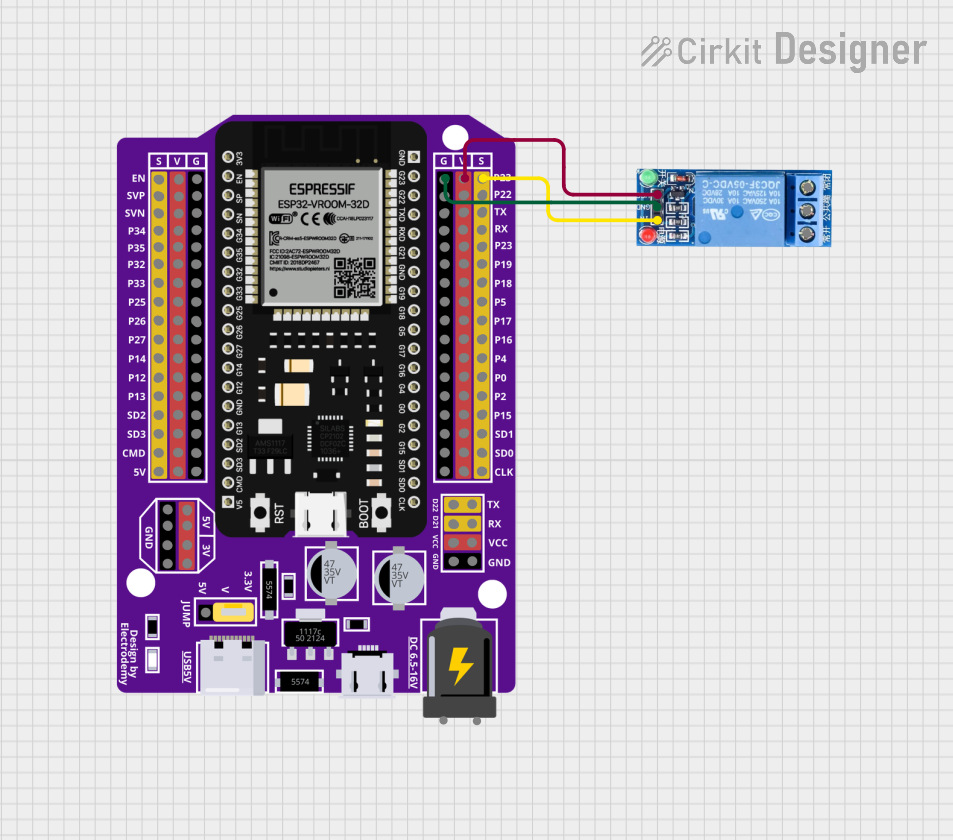
 Open Project in Cirkit Designer
Open Project in Cirkit Designer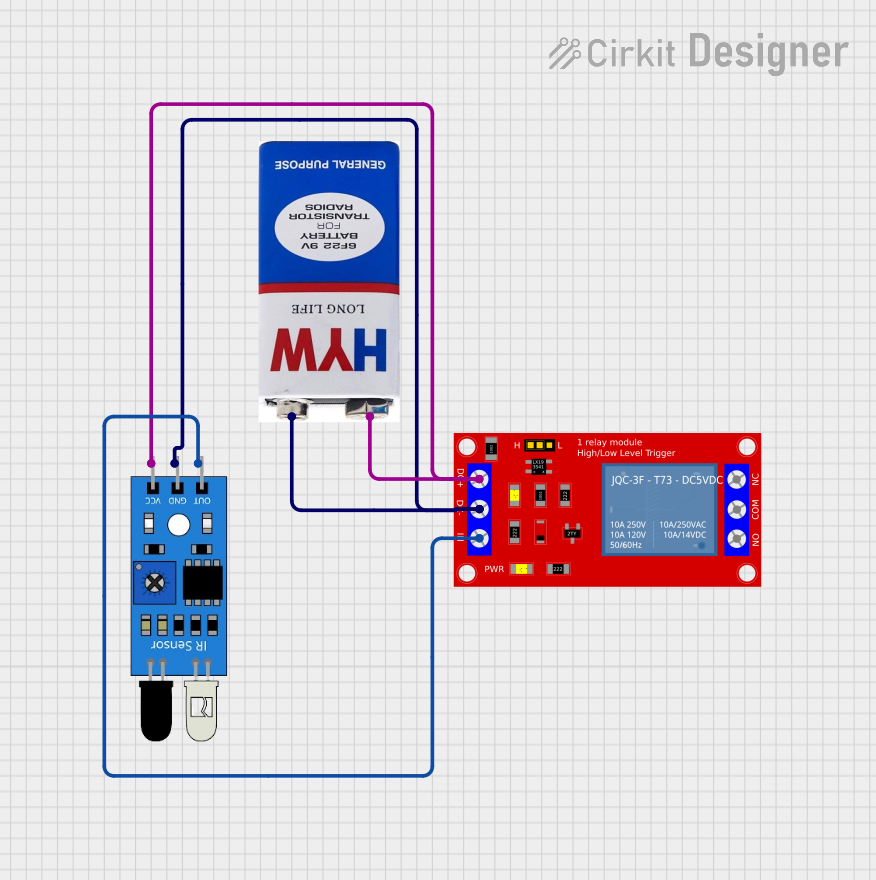
 Open Project in Cirkit Designer
Open Project in Cirkit Designer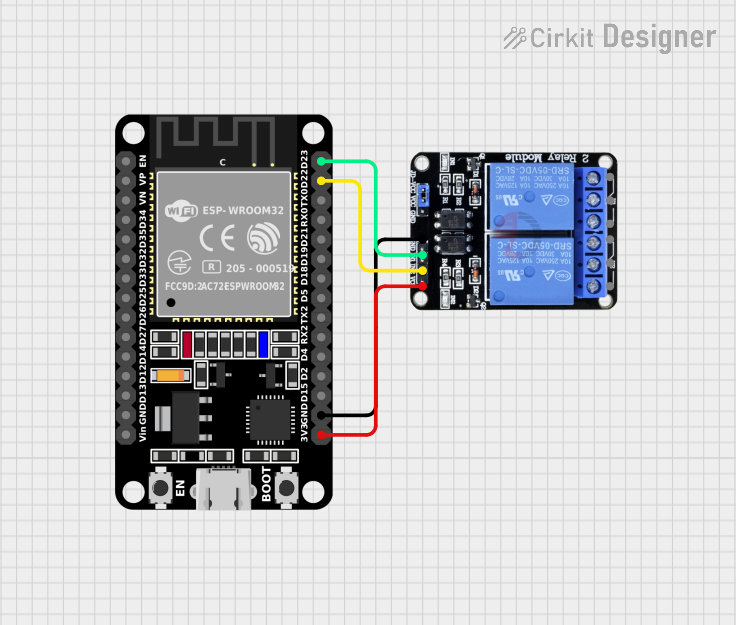
 Open Project in Cirkit Designer
Open Project in Cirkit DesignerExplore Projects Built with 1 Channel Relay 5V

 Open Project in Cirkit Designer
Open Project in Cirkit Designer
 Open Project in Cirkit Designer
Open Project in Cirkit Designer
 Open Project in Cirkit Designer
Open Project in Cirkit Designer
 Open Project in Cirkit Designer
Open Project in Cirkit DesignerCommon Applications:
- Home automation (e.g., controlling lights or fans)
- Industrial control systems
- IoT projects
- Motor control
- Smart home devices
Technical Specifications
The following table outlines the key technical details of the 1 Channel Relay 5V module:
| Parameter | Specification |
|---|---|
| Operating Voltage | 5V DC |
| Trigger Voltage | 3.3V to 5V DC |
| Maximum Load Voltage | 250V AC / 30V DC |
| Maximum Load Current | 10A |
| Relay Type | SPDT (Single Pole Double Throw) |
| Isolation | Optocoupler isolation for safety |
| Dimensions | ~50mm x 26mm x 18mm |
| Indicator LED | Yes (lights up when the relay is active) |
Pin Configuration
The 1 Channel Relay 5V module has the following pins:
| Pin Name | Description |
|---|---|
| VCC | Connect to 5V DC power supply. |
| GND | Connect to ground. |
| IN | Control signal input (3.3V to 5V logic level). |
| COM | Common terminal for the relay switch. |
| NO | Normally Open terminal (connected to COM when the relay is activated). |
| NC | Normally Closed terminal (connected to COM when the relay is not activated). |
Usage Instructions
How to Use the 1 Channel Relay 5V in a Circuit
- Power the Module: Connect the VCC pin to a 5V DC power source and the GND pin to ground.
- Control Signal: Connect the IN pin to a digital output pin of a microcontroller (e.g., Arduino UNO). The relay will activate when the control signal is HIGH.
- Load Connection:
- Connect the device you want to control (e.g., a light bulb) to the NO (Normally Open) terminal.
- Connect the other end of the device to the power source.
- The COM terminal should be connected to the other side of the power source.
- Isolation: Ensure proper isolation between the low voltage control circuit and the high voltage load circuit to prevent damage or hazards.
Example Circuit with Arduino UNO
Below is an example of how to connect the 1 Channel Relay 5V to an Arduino UNO to control a light bulb:
Circuit Connections:
- Relay Module:
- VCC → 5V pin on Arduino
- GND → GND pin on Arduino
- IN → Digital pin 7 on Arduino
- Load:
- Connect the light bulb to the NO terminal and the power source.
- Connect the COM terminal to the other side of the power source.
Arduino Code:
// Example code to control a 1 Channel Relay 5V with Arduino UNO
#define RELAY_PIN 7 // Define the digital pin connected to the relay module
void setup() {
pinMode(RELAY_PIN, OUTPUT); // Set the relay pin as an output
digitalWrite(RELAY_PIN, LOW); // Ensure the relay is off at startup
}
void loop() {
digitalWrite(RELAY_PIN, HIGH); // Turn the relay ON (activates the load)
delay(5000); // Keep the relay ON for 5 seconds
digitalWrite(RELAY_PIN, LOW); // Turn the relay OFF
delay(5000); // Keep the relay OFF for 5 seconds
}
Important Considerations:
- Power Supply: Ensure the relay module is powered with a stable 5V DC supply.
- Load Ratings: Do not exceed the maximum voltage (250V AC / 30V DC) or current (10A) ratings of the relay.
- Isolation: Use optocoupler isolation to protect the microcontroller from high voltage spikes.
- Flyback Diode: If controlling an inductive load (e.g., a motor), use a flyback diode across the load to prevent voltage spikes.
Troubleshooting and FAQs
Common Issues and Solutions:
Relay Not Activating:
- Check if the VCC and GND connections are secure.
- Ensure the control signal (IN pin) is receiving the correct voltage (3.3V to 5V).
- Verify that the Arduino pin is set as an output and is providing the correct signal.
Load Not Switching:
- Confirm that the load is properly connected to the NO and COM terminals.
- Check the load's power source and ensure it is functioning correctly.
- Verify that the load does not exceed the relay's voltage or current ratings.
Relay Stuck in ON or OFF State:
- Inspect the relay module for physical damage or debris.
- Ensure the control signal is toggling correctly between HIGH and LOW states.
Indicator LED Not Lighting Up:
- Check the VCC and GND connections.
- Ensure the control signal is HIGH when the relay is supposed to activate.
FAQs:
Q1: Can I use the 1 Channel Relay 5V with a 3.3V microcontroller like ESP8266?
A1: Yes, the relay module can be triggered with a 3.3V control signal. However, ensure the VCC pin is still powered with 5V.
Q2: Is the relay safe for switching high-power devices?
A2: Yes, the relay is designed for high-power devices up to 250V AC or 30V DC at 10A. Always ensure proper isolation and follow safety guidelines.
Q3: Can I control multiple relays with one Arduino?
A3: Yes, you can control multiple relays by connecting each relay's IN pin to a separate digital output pin on the Arduino.
Q4: Why is the relay clicking but not switching the load?
A4: This could be due to incorrect wiring of the load or a faulty relay. Double-check the connections and ensure the load is within the relay's specifications.